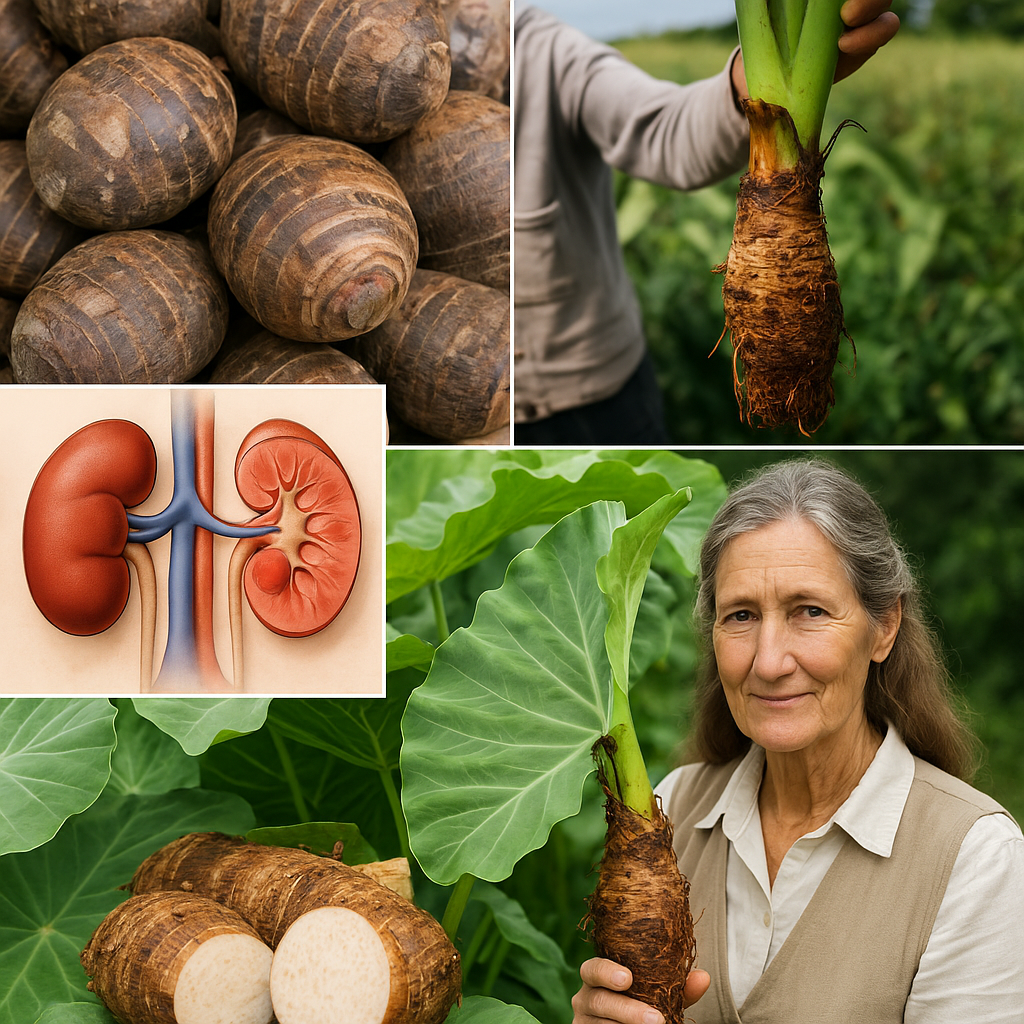In today’s world of fad diets and exotic supplements, one humble root continues to rise in popularity — not because it’s trendy, but because it works. Introducing taro root, also known as Colocasia esculenta, a powerhouse of nutrition that has stood the test of time for centuries across Asia, the Pacific Islands, Africa, and Latin America.
With its nutty flavor, creamy texture, and impressive nutrient profile, taro isn’t just food — it’s fuel for whole-body wellness. Whether you’re aiming to stabilize blood sugar, support digestion, or explore new flavors in the kitchen, this root has you covered.
Let’s dive into everything you need to know about taro root: how to use it, why it’s so healthy, and three easy recipes you can start cooking today.

🥔 What Is Taro Root?
Taro root is a starchy underground tuber from the Colocasia plant, often recognized by its brown, hairy skin and white or purple-speckled interior. While it looks modest on the outside, its nutritional power is anything but.
Around the world, taro goes by many names:
- Kalo in Hawaii
- Dasheen in the Caribbean
- Cocoyam in West Africa
- Eddoe in parts of Asia
- Water yam or purple yam in Latin America
Its culinary versatility and nutrient density make it a staple in traditional diets — and a smart addition to yours.
✅ Top Health Benefits of Taro Root
1. High in Nutrients
Taro is a great source of complex carbohydrates, dietary fiber, vitamin C, vitamin E, and essential minerals like potassium, magnesium, and iron.
2. Supports Digestive Health
Its high fiber content promotes regular bowel movements, eases bloating, and supports a healthy gut microbiome.
3. Natural Blood Sugar Control
Unlike simple carbs, the complex starches and fiber in taro slow digestion and glucose absorption — ideal for managing blood sugar levels.
4. Heart-Healthy Properties
Thanks to its potassium content, taro helps regulate blood pressure by balancing sodium levels and relaxing blood vessel walls.
5. Antioxidant Rich
Taro is loaded with antioxidants such as polyphenols and vitamin C, which help reduce inflammation and fight oxidative stress.
6. Boosts Eye Health
With its vitamin A and carotenoid content, taro can help maintain healthy vision and reduce the risk of macular degeneration.
🍽 3 Delicious and Healthy Taro Root Recipes
Let’s make taro part of your weekly meal plan with these simple, nourishing recipes.
1. Creamy Taro Mash with Coconut Milk
Ingredients:
- 2 cups taro root (peeled and cubed)
- 1 cup unsweetened coconut milk
- 1 tsp butter (optional)
- Salt and pepper to taste
Instructions:
- Boil taro cubes in water for 15–20 minutes or until fork-tender
- Drain and mash while still warm
- Add coconut milk, butter, salt, and pepper
- Mix until smooth and creamy
🟢 Why it works: Easy to digest and perfect for gut health. A comforting alternative to mashed potatoes, without the sugar spike.
2. Baked Taro Chips (Crispy & Guilt-Free)
Ingredients:
- 1 medium taro root
- 2 tbsp olive oil
- Salt and spices to taste (paprika, oregano, garlic powder)
Instructions:
- Peel and slice taro root into very thin rounds
- Toss slices with olive oil and seasonings
- Spread on a parchment-lined baking sheet
- Bake at 350°F (180°C) for 15–20 minutes until golden and crisp
🟢 Why it works: A crunchy, healthy snack that satisfies chip cravings while supporting heart and blood sugar health.
3. Taro & Vegetable Coconut Soup
Ingredients:
- 1 cup cubed taro root
- 1 carrot, chopped
- 1 stalk celery, chopped
- 2 garlic cloves, minced
- 4 cups vegetable broth
- 1 cup coconut milk
- Salt and pepper to taste
Instructions:
- In a pot, simmer taro, carrot, celery, and garlic in broth until tender
- Stir in coconut milk and season
- Blend until creamy (optional)
- Serve hot
🟢 Why it works: Full of immune-boosting ingredients and digestive-friendly fiber. Great for inflammation and gut support.
⚠️ Important Precautions When Using Taro
Taro is powerful — but it must be respected.
❗Never eat taro raw.
It contains calcium oxalate crystals, which can cause throat irritation and digestive distress. Cooking deactivates these compounds.
❗People with kidney stones should limit intake.
Because of its oxalate content, taro may contribute to stone formation in sensitive individuals.
❗Watch for allergies.
Though rare, taro can cause allergic reactions. If you experience itching, swelling, or tingling, stop use and consult a doctor.

🔚 Conclusion: The Natural Power of Taro Root
Taro root isn’t just a starchy tuber — it’s a nutrient-rich, healing food that’s been used for centuries to nourish the body. From improving digestion and heart health to helping balance blood sugar, it offers a whole-body boost with every bite.
Whether you enjoy it mashed, baked, or in a creamy soup, taro is a delicious way to power up your wellness routine. As long as it’s cooked properly and enjoyed in moderation, this ancient root can be one of the smartest choices you make in your kitchen.
✨ Try it once — and you just might fall in love with the earthy, comforting taste of this timeless superfood.
Share this with someone who’s ready to eat better, feel better, and live more naturally.


